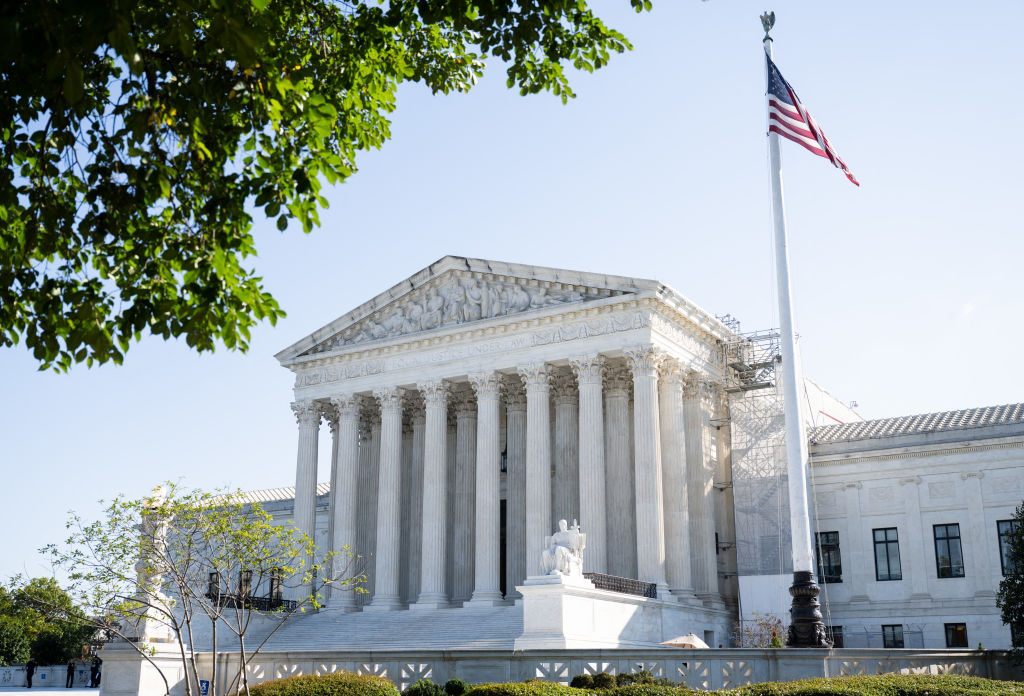The Supreme Courtroom on Monday agreed to overview a ruling by a federal appeals courtroom that, the Trump administration contends, “has already triggered—and, if left in place, will proceed to trigger—‘untold interference with the Government Department’s skill to handle the southern border.’” The immigrant rights group and asylum seekers who filed the lawsuit had urged the justices to go away the decision by the U.S. Courtroom of Appeals for the ninth Circuit in place, telling them that the federal government’s argument “would empower border officers to render” federal regulation governing the processing of asylum seekers “wholly inoperable at ports of entry.”
Below federal immigration regulation, a noncitizen “who’s bodily current in the USA or who arrives in the USA … whether or not or not at a delegated port of arrival … might apply for asylum.” Noncitizens who arrive at a port of entry and point out that they wish to search asylum are inspected and processed – that’s, screened by border officers after which channeled into the asylum system, which can embody both an interview with an asylum officer or proceedings in immigration courtroom.
In 2016, in response to a surge within the variety of Haitian immigrants in search of asylum in San Ysidro, outdoors San Diego, the Division of Homeland Safety initiated a coverage often called “metering”: Customs and Border Patrol officers turned again asylum seekers earlier than they entered the USA. The coverage was expanded to all ports of entry throughout the U.S. border with Mexico, and it was formalized in a memorandum in 2018.
Al Otro Lado, an immigrant rights group, and 13 asylum seekers went to federal courtroom in California, the place they argued that the metering coverage violated the federal regulation governing administrative businesses. The important thing query earlier than the ninth Circuit was whether or not asylum seekers who have been turned away from ports of entry earlier than they might enter the USA had “arrived in” the USA for functions of with the ability to apply for asylum underneath federal immigration regulation.
By a vote of 2-1, the courtroom of appeals agreed with the challengers that they’d. “The phrase ‘bodily current in the USA,’” Choose Michelle Friedland wrote, “encompasses noncitizens inside our borders, and the phrase ‘arrives in the USA’ encompasses those that encounter officers on the border, whichever facet of the border they’re standing on.” Furthermore, she continued, an asylum seeker who arrives on the border should then be inspected and processed.
A deeply divided full courtroom of appeals declined to rethink the case. In a dissent joined by 11 different judges, Choose Daniel Bress wrote that the panel’s holding “violates clear statutory textual content, precedent, the presumption towards” making use of U.S. regulation outdoors the USA, “and long-held understandings limiting utility of the asylum and inspection legal guidelines to aliens ‘in’ the USA—which aliens in Mexico are usually not.”
The Trump administration came to the Supreme Court in July, asking the justices to weigh in. U.S. Solicitor Basic D. John Sauer echoed Bress’ dissent, telling the courtroom that the ninth Courtroom’s ruling “defies the plain textual content of the governing statutes. In atypical English, an individual ‘arrives in’ a rustic solely when he comes inside its borders. An alien thus doesn’t ‘arrive in’ the USA whereas he’s nonetheless in Mexico.”
The challengers argued that as a result of “the federal government rescinded the metering coverage years in the past,” the query that the Trump administration has requested the courtroom to resolve “has nearly no current implications, and sure no future implications.”
Circumstances: Noem v. Al Otro Lado
Really useful Quotation:
Amy Howe,
Supreme Courtroom agrees to listen to case on border crossings,
SCOTUSblog (Nov. 17, 2025, 10:25 AM),
https://www.scotusblog.com/2025/11/supreme-court-agrees-to-hear-case-on-border-crossings/
